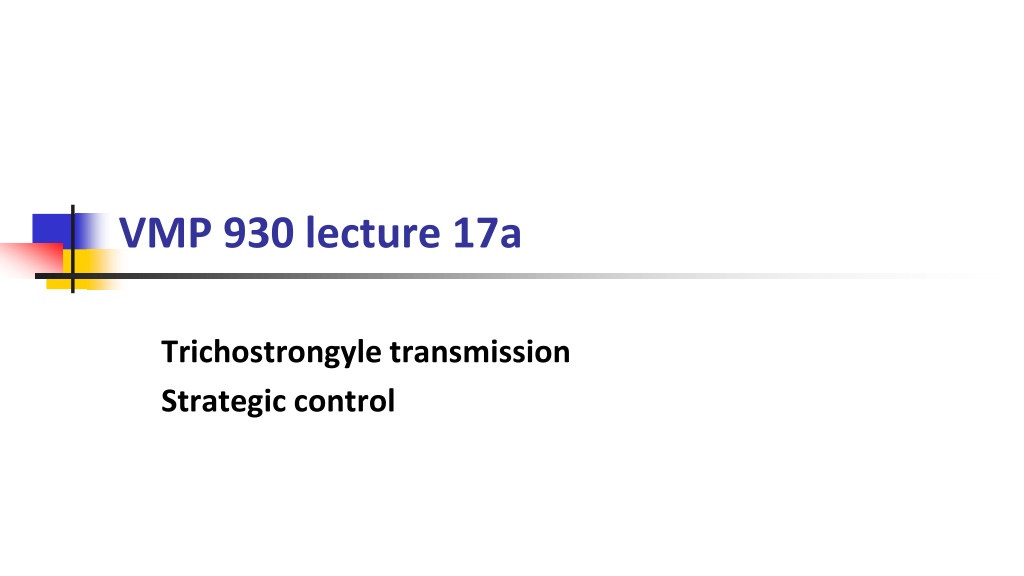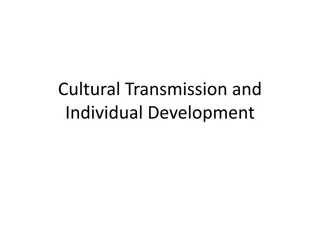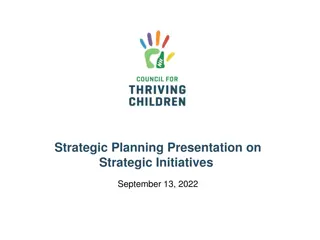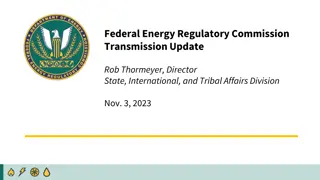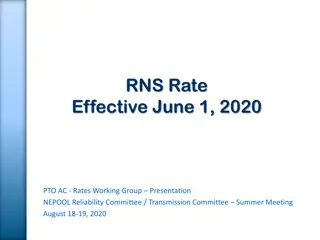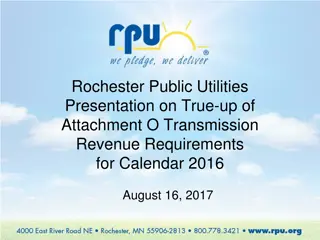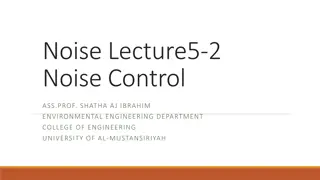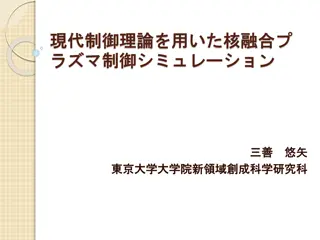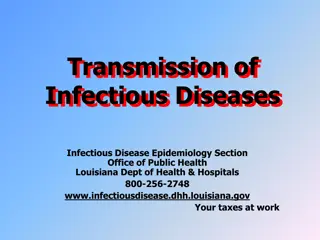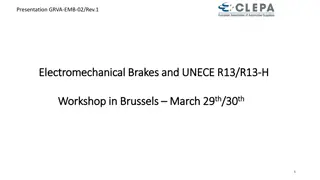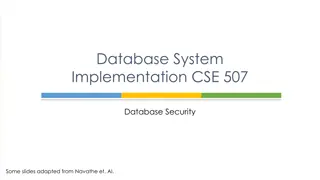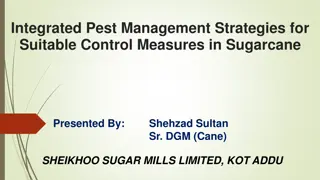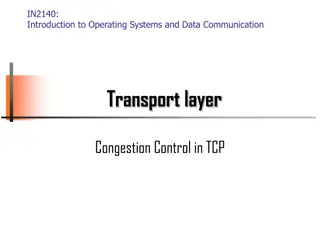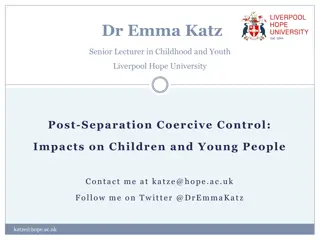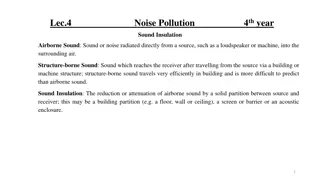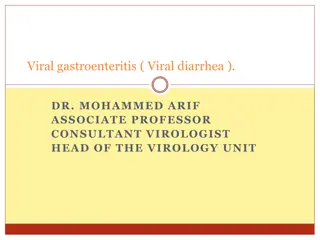Understanding Trichostrongyle Transmission and Strategic Control
Trichostrongyle transmission primarily occurs through pasture contamination with eggs shed by adult worm populations in grazing hosts. The development of infective larvae on pasture involves specific conditions like moisture and warmth, leading to different types of ostertagiasis infections. Various control measures are essential to manage pasture-borne trichostrongyle infections effectively.
Download Presentation

Please find below an Image/Link to download the presentation.
The content on the website is provided AS IS for your information and personal use only. It may not be sold, licensed, or shared on other websites without obtaining consent from the author. Download presentation by click this link. If you encounter any issues during the download, it is possible that the publisher has removed the file from their server.
E N D
Presentation Transcript
VMP 930 lecture 17a Trichostrongyle transmission Strategic control
Trichostrongyle Transmission and control Objectives: Describe egg to infective larva development on pasture including highest risk for infection Compare Type I with Type II ostertagiasis Describe various control measures for pasture-borne trichostrongyle infections
Trichostrongyle: Transmission Source of infection = Pasture Adult worm population inside grazing hosts determines number of eggs shed on pasture.
Trichostrongyle: Transmission Appropriate conditions (moisture, warmth, O2) allow eggs to hatch and L1 become L3 Requires 5 7 days under optimal conditions 1 2 3 4
Source of infection = Pasture How is a large population of adult worms generated? Remember adult worms do not replicate. infective larvae (L3) in dew drop on grass
Source of infection = Pasture (cont.) How is a large population of L3 established on pasture? Type I ostertagiasis when L4 do not arrest they emerge and become egg laying adults in 3 weeks. Calves show clinical signs in the Fall in cool temperate regions; or, in the Spring in hot, semi-arid regions. Why?
Source of infection = Pasture (cont.) Type II ostertagiasis When larvae in arrested development in abomasal mucosa emerge they can be a source of adults producing eggs to contaminate pasture and cause of disease. Long yearlings (grazed the previous season) develop adult worms That contaminate spring pastures with ova in the North. Southern grazed calves moved to feedlots (anywhere) in the Fall have potential for Type II disease.
Source of infection = Pasture (cont.) Periparturient haemonchosis in ewes. Emergence of L4 stimulated by parturition. Adults develop and produce eggs to contaminate pastures for lambs to ingest L3. Ewes debilitated by large adult worm burden.
Control Tactical treatments - when susceptible animals are on heavily contaminated pastures you must treat repeatedly due to re-infection; or, treat and move to a clean pasture. Strategic treatments - soon after uninfected animals are put on pasture and become infected they are treated to prevent adult worm from generating eggs to contaminate pasture (sustained release or repeated macrolid drug). Infected animals are treated before being put on pasture. Spring and Fall.
Control: Strategic In the cool temperate regions: treat calves with repeating or long lasting adulticide in spring when put on pasture; treat re-stocking calves with adult and L4 killing drugs in late fall. In subtropical regions: treat calves, long-yearlings in early fall (wet season) with adulticidal drugs; treat calves in late spring/early summer at start of dry season with adult and L4 killing drugs.
Control of trichostrongyles To get optimal milk production, first lactation cows are treated just before calving. To prevent disease and minimize pasture contamination pregnant ewes and goats are treated before parturition.
Control: Sustainable Approach with Minimal or no Drugs Selective treatment for small ruminants based on FAMACHA to reduce drug resistance development in an untreated refugia worm population. Accelerated rotational grazing. Requires a lot of fencing (many individual pastures) and moving the herd every three days or less. Mob grazing like migratory herds. Unlike small ruminants, mature cattle are very resistant to large worm burdens and clinical disease. Use them to remove infective larvae and reduce exposure to young calves. Reduced herd density
Discussion Question Why do one-year-old calves grazed in Texas and Louisiana and being put on feedlots in Iowa in September usually require deworming even though they have low eggs per gram fecal egg counts? Hint: Type II ostertagiasis.
VMP 930 lecture 17b Dictyocaulus the only trichostrongyle inhabiting the lung
Dictyocaulus Objectives Describe the pathology and adult worm location (tissue and organ) in the host Know host specificity and risks of co-grazing horses with donkeys Know how Dictyocaulus is transmitted
Dictyocaulus sp. Lung worm of cattle (D. viviparus), sheep and goats (D. filaria), equine (D. arnfieldi) adult worms in bronchi Adults found in bronchi and trachea are up to 80 mm long and thin. male adult worm L1 stage from fresh feces
Dictyocaulus sp. Life cycle predicts onset of clinical signs and when to treat: 7 days after ingestion of L3 from pasture, first season grazing calves begin showing respiratory signs. Adult worms present in bronchi at 3-4 weeks after ingestion of L3, severe pneumonia. Results in strong immunity.
Dictyocaulus sp. Pathogenesis: worms and inflammatory exudate block air flow. inflammatory exudate blocking air flow consolidated lung
Dictyocaulus sp. Clinical signs: young animals on pasture first year showing rapid breathing and coughing. L1 in feces (not eggs). diagnostic larva found in fresh feces. note dark granules.
Dictyocaulus sp. Treatment and control: treat at first signs of coughing (about one week after put on contaminated pasture). Avoid low, wet pastures. Local foci of contaminated pastures. Problem for mountain pastures as snow cover protects L3 over winter. Do not co-graze donkeys and horses.
